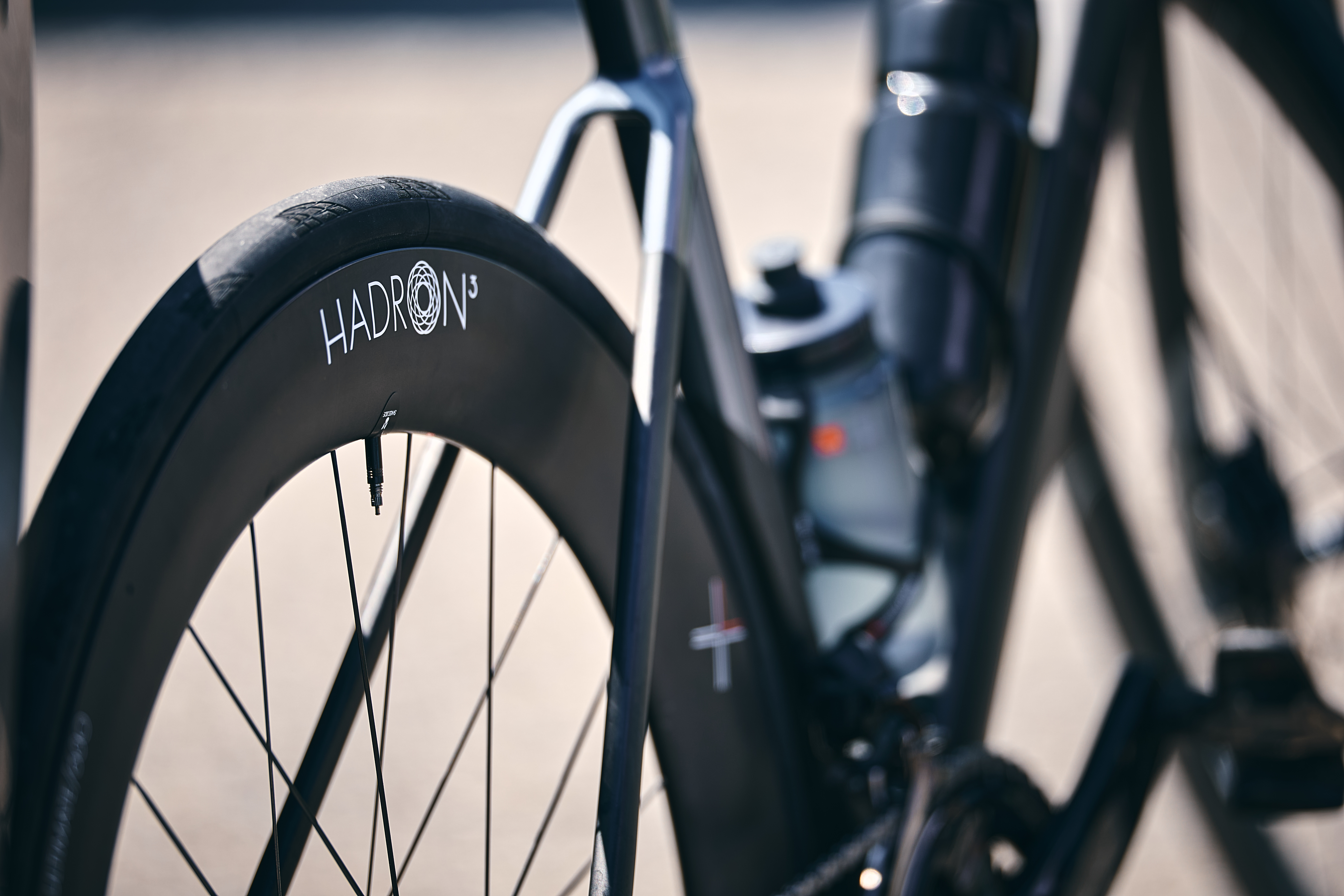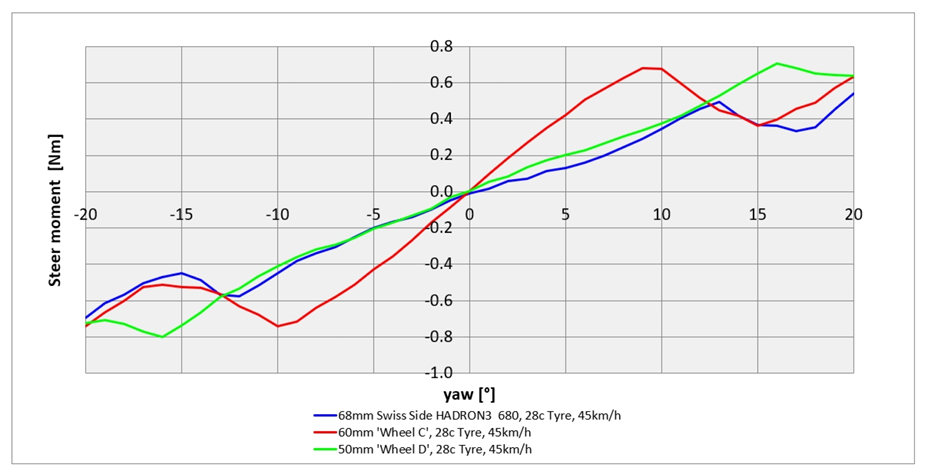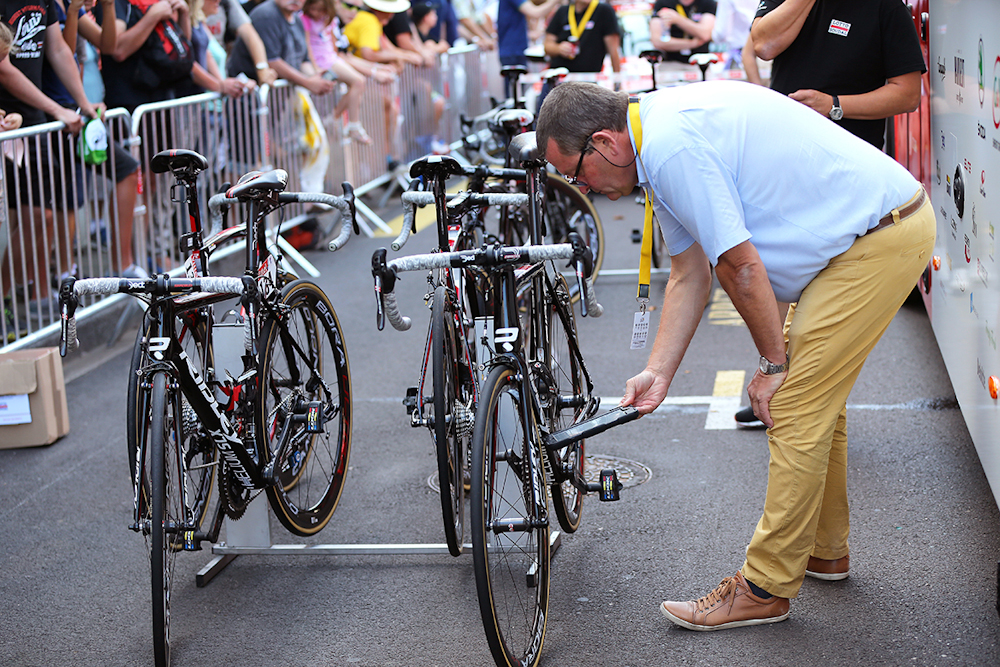WorldTour team's wheel sponsor slams UCI proposals in open letter
Wheel brand calls for a science-based approach and highlights the financial outlay of developing new products

Swiss Side, wheel sponsor of Decathlon-AG2R La Mondiale, has today released an open letter to the UCI pouring scorn on the sport’s governing body regarding the announcement of new rules regarding wheel depth.
This comes hot on the heels of new rules limiting the width of handlebars to no narrower than 40cm, which drew immediate condemnation from bike fitters, highlighting the potential injury risk it would put on female riders.
The open letter outlines studies that show its own deeper wheels to be more stable than shallower competitor options, but goes on to harshly criticise not only the substance of the new rules but also the timescale of implementation.
The wheel depth rules
In simple terms, as of January 1st 2026, rims used in UCI sanctioned events can be no deeper than 65mm. The intended purpose of this rule is to improve rider safety, as it has been inferred by the UCI that deeper rims on the whole are more susceptible to crosswind deflection. But also, as deeper wheels are generally faster, it forms part of the UCI’s ongoing quest to reduce the overall speed of races that have been steadily climbing year by year to ever greater heights.
This speed reduction is also the basis of the aforementioned handlebar rule, and a proposed new gear limitation rule that would potentially hamstring all SRAM-sponsored teams.

Rim depth and wheel stability
Swiss Side argues, using data comparing its latest Hadron3 68mm deep wheels, that wheel depth doesn’t necessarily have any impact on stability, and therefore, safety. It argues:
“Rim height has a limited impact on stability, predictable handling and safety. Through the objective measurement of the steering moment, we can firmly state that rim depth has far less influence than tyre width, tyre tread pattern (and its effect on the aerodynamic characteristics), and the steering geometry of the bike frame (steering axis angle and trail). Furthermore, the rim shape and depth are the parameters which enable tuning the handling characteristics of the wheel.”
The latest race content, interviews, features, reviews and expert buying guides, direct to your inbox!
It also goes on to state that deeper wheels, being of greater rotating mass, have greater inertia and are therefore inherently more stable, and goes so far as to provide a graph of steering moment (the force required to turn the front wheel) of its Hadron3 wheel versus an unnamed 60mm and 50mm deep competitor wheel. The results of this graph show that its own wheels offer up a lower steering moment than shallower alternatives, resulting in, according to Swiss Side, greater handling stability.
A reading of the data presented does indeed show that these 68mm deep rims are, in the conditions studied, more stable than two shallower (and thus legal by the UCI's new rules) alternatives, but that doesn’t necessarily mean that deeper rims in general are more stable and therefore safer. We rarely see teams opting to fit 80mm deep wheels in high winds for good reason.
But it's the call for a more science-based approach that Swiss Side is calling for, rather than an arbitrary hard limit of 65mm without considering the total picture of safety-affecting factors.
It is fair to say wheel design has come on a long way since the days of simply making rims deeper to make them faster, with brands spending months on end and vast sums of money optimising rim shapes to shape the airflow to their needs. It is also hard to ignore the possibility that it's this investment, rather than just the claimed lack of scientific basis for the ruling, that Swiss Side has taken issue with.
Six months and six figure sums
Unless the UCI u-turns on the announcement, there are approximately six months until this rule comes into force, with the Tour Down Under being the likely first outing proper for the commissaires.
Swiss Side’s letter laments such a short timescale for implementation, which has no doubt been compounded by the brand releasing a soon-to-be illegal wheelset just two weeks ago.
As well as urging the UCI to consider a more scientific approach, it also urges at least some consideration of how the sport is funded:
“The time, effort, and cost to develop new equipment need to be considered as part of the decision-making process. For example, the development of a high-level road cycling wheel is a 2.5-year development process.
“The total cost for such a development is a six-figure sum (EUR), and is amortised by the sale of the product, typically over a 4-year product life cycle.”
It is fair to say that pro cycling is a key advertisement stream for bike brands to sell their wares, and to not take the development cycles of products into account when implementing these new rules is perhaps a little short sighted from the UCI, but perhaps putting words in the mouth of the governing body, I imagine they would argue that when it comes to safety other considerations have to take a back seat.

Rule implementation
Swiss Side does make some valid points. There is almost undoubtedly a case to be made that some illegal wheelsets will be more stable than some legal wheelsets, but if the aim is primarily centred on reduced speed rather than reduced instability, a wheel depth limit does still make some sense if you take the short implementation period into account.
One must consider that the rules of the sport have to be enforced by the commissaires, often checking compliance in the pits with equipment as basic as a tape measure. It’s unreasonable to expect the UCI to develop an on-the-fly means of measuring steering moment when, with the generally accepted rule of thumb being that deeper is more prone to being buffeted by crosswinds as well as being faster, a ruler will do just as well.

Will joined the Cyclingnews team as a reviews writer in 2022, having previously written for Cyclist, BikeRadar and Advntr. He’s tried his hand at most cycling disciplines, from the standard mix of road, gravel, and mountain bike, to the more unusual like bike polo and tracklocross. He’s made his own bike frames, covered tech news from the biggest races on the planet, and published countless premium galleries thanks to his excellent photographic eye. Also, given he doesn’t ever ride indoors he’s become a real expert on foul-weather riding gear. His collection of bikes is a real smorgasbord, with everything from vintage-style steel tourers through to superlight flat bar hill climb machines.
You must confirm your public display name before commenting
Please logout and then login again, you will then be prompted to enter your display name.
